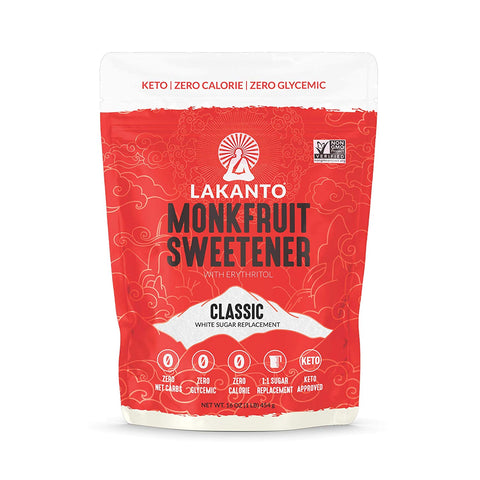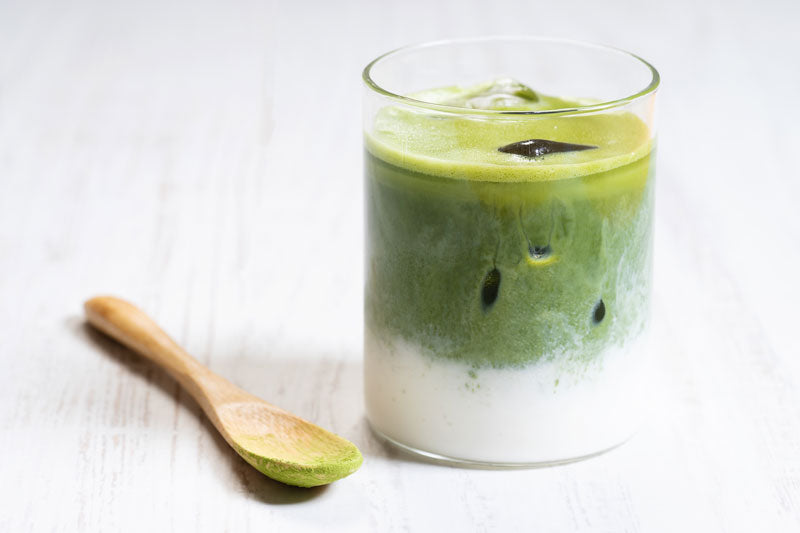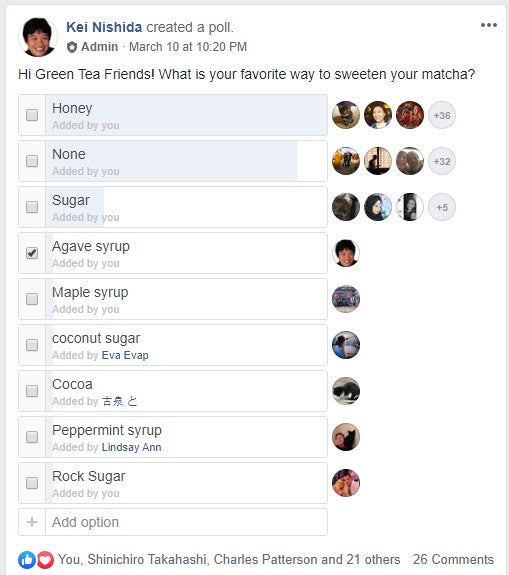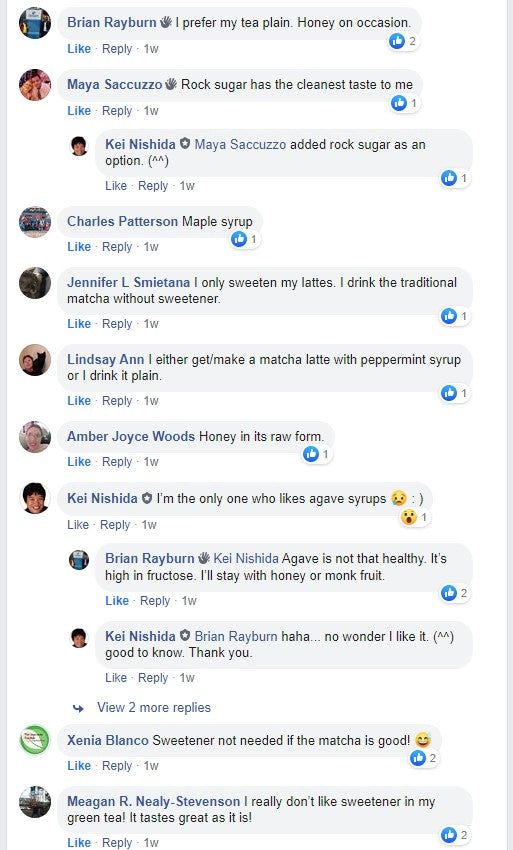Subscribe to Green Tea Podcast:
10 Ways to Sweeten Your Matcha Green Tea
How do you sweeten your matcha green tea? Whether you have a tried-and-true method or you're new to enjoying this beverage altogether, it's worth giving all of the different options a try.
There’s a kind of simplicity in tea, with the tradition being "add water" and trusting that the flavor profile matches the imagination. However, as I’ve fallen in love with tea, there’s a shocking variation in taste profiles. As the tea market continues to grow, there are all sorts of tips and tricks out there to alter the taste of your tea.
This blog post was very popular, so we made a video. Please watch the video first, and don't forget to get all of the details below.
Matcha stands out in the world of taste profiles.
Ever tried a cha-soba sushi roll? Yes, it contains matcha.
How about a matcha cupcake with pistachios?
As much as I’d like to think I understand the world of matcha generally, I’m constantly presented with new mixes and uses for matcha. It’s even more surprising considering that matcha comes from the same leaves as its green tea brother, gyokuro! While I have yet to try nitro matcha cold brew, it sounds delicious.
I want to review 10 ways you can sweeten your matcha drink specifically, and hopefully, you can continue experiencing what the world of matcha has to offer:
(Note: If you want to try it out, click on the images to get the product I use on Amazon.)
10 Ways to Sweeten your Matcha Green Tea
1. Maple Syrup
We Canadians thrive on maple syrup. We kind of have to put it in our matcha. Maple syrup slightly alters the original flavor of matcha and contains 260 calories per 100g. However, it’s readily available as a sweetener. And honestly… who doesn’t enjoy maple syrup?
(By the way, if you're new to matcha, start with this post to learn the basics!)
2. Stevia

Stevia is common, very common. In fact, chances are you’ve heard about it through various everyday drinks and its commercial uses. Stevia is a natural, zero-calorie sweetener known in part for its bitterness but also for its limited aftertaste. It’s considered a direct sugar substitute.
Stevia, in this respect, does not take away the flavor matcha has to provide. It simply elevates and matches matcha’s subtleness.
3. Light Coconut Milk

There are many different matcha sweeteners available. However, only a select few offer a sweet yet floral and nutty flavor. While light coconut milk simply contains more water than its regular sibling, it can be a healthier alternative and act as a somewhat powerful sweetener.
4. Macadamia Nut Milk
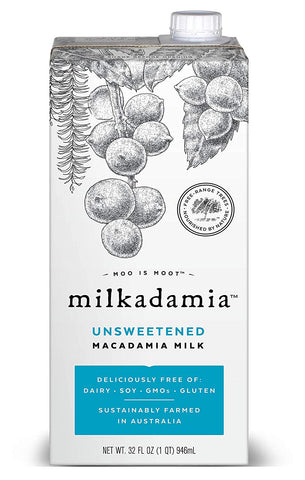
I’m a huge fan of macadamia nuts and the flavors that can be extracted from them. Macadamia nut milk is pleasantly thick and smooth. It’s known for its richer, nuttier, and butterier flavor. It has similarities with almond milk; however, it tends to have a stronger flavor profile.
5. Agave Syrup

I first came across agave syrup while living in Japan, and its sweetness surprised me. However, it’s very sweet—even sweeter than sugar. But this doesn’t mean you shouldn’t mix it with your matcha! In fact, it’s a common matcha sweetener.
Agave syrups have several variations, with darker agave syrups having a stronger caramel flavor while lighter flavors have a milder and almost neutral composition.

6. Coconut Sugar
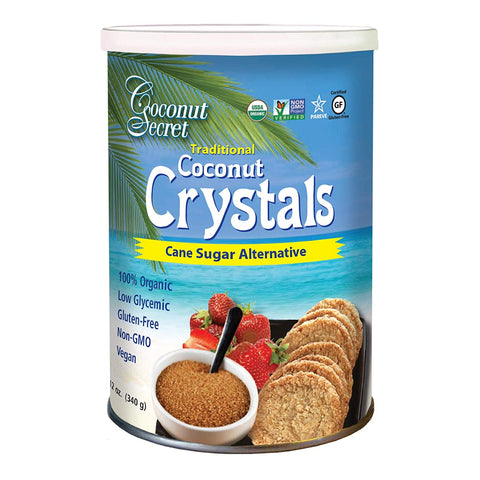
This is perhaps one of the less commonly used ways to sweeten your matcha on the list, but coconut sugar is subtly sweet. It comes across as brown sugar not only in appearance but also in flavor and sweetness.
If you’re looking to try something different with a faux caramel-like distinction, coconut sugar fits your matcha on many different levels.
7. Apple "Honey"
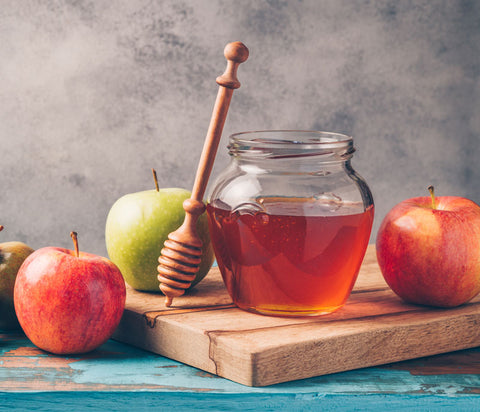
This is perhaps one of the less commonly used ways to sweeten your matcha on the list, but coconut sugar is subtly sweet. It comes across as brown sugar not only in appearance but also in flavor and sweetness.
If you’re looking to try something different with a faux caramel-like distinction, coconut sugar fits your matcha on many different levels.
8. Medjool Date

One of the more unique items available on this list of Medjool dates is a fresh fruit with a strong yet rich and caramel-like taste. Relatively high in calories, they also tend to be high in antioxidants and great for general digestion. They should be blended down before adding to your matcha and enjoyed as a subtle sweetener. They can also be used to create date syrup.
9. Date Sugar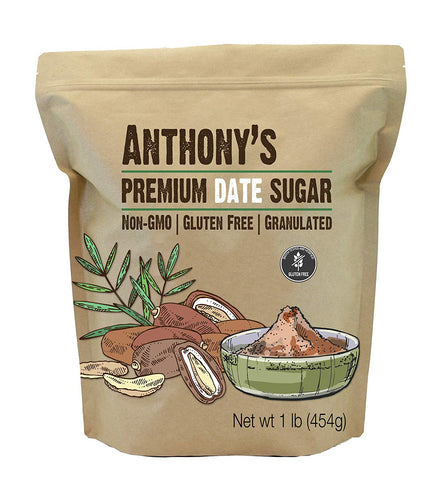
As much as I enjoy maple syrup, butterscotch is right up there. Date sugar, being as unique as it is, offers a notable butterscotch-like flavor. It also happens to contain many of the benefits of medjool dates, given that it’s not far off in terms of composition. It’s nonetheless another unique option for one’s matcha.
10. Monk Fruit
Along with stevia and xylitol, monk fruit is a zero-calorie sweetener option available on the market. Another particular sweet option, it also contains zero sugar and zero carbohydrates, surprisingly enough. It’s known partly for its antioxidants; however, it can be too sweet for some people, and it’s not the most available item on this list.
And the Classic Way to Sweeten your Matcha Green Tea...
Soy milk: As one of the more subtle sweeteners, it’s high in protein content and contains vitamin A, B-12, potassium, and calcium. Being plant-based, soy milk can have a bean-like or chalk-like taste; however, there are many options available that many consumers can likely find the best fit for their matcha.
While this list stops at 10 ways to sweeten your matcha, there are many more. The beautiful thing is that matcha is the vehicle to expand what flavors work for you.
Whether you’re thinking of enjoying a matcha tea latte, simply matcha with water, or anything in between, there are more than enough tasty and enjoyable options to surprise you. Go ahead—try them all and report back to let us know what your favorite is!

Enhancing Your Matcha Experience: Sweetener Choices, Pairings, and Tips
1. Health Benefits of Popular Sweeteners
When choosing a sweetener for your matcha, consider options that add not only flavor but also health benefits. For example, honey is packed with antioxidants, which complement the natural benefits of matcha by supporting immune health and fighting inflammation. On the other hand, Stevia is calorie-free, making it a good choice for those looking to enjoy a lightly sweetened matcha without added sugars.
Coconut sugar is lower on the glycemic index, meaning it won’t cause a spike in blood sugar. This makes it a healthier option for anyone watching their blood sugar levels. You can match the sweetener to your wellness goals while enjoying your matcha.
2. Dairy and Non-Dairy Milk Options for Sweetening Matcha
Adding milk to matcha not only makes it creamy but can also naturally sweeten the drink. Almond milk works wonders with matcha for a light, nutty flavor, giving it a subtle sweetness without overpowering the tea's natural taste. Oat milk is slightly sweeter and thicker, creating a smooth, velvety matcha latte with a natural sweetness.
Coconut milk, on the other hand, adds a tropical touch to your matcha that complements other sweeteners like honey or maple syrup. Trying these milk options can help you find the perfect matcha latte base.
3. Flavor Pairing Suggestions for Unique Matcha Combinations
Consider pairing sweeteners with other flavors for an extra special cup of matcha to create your signature taste. Maple syrup pairs beautifully with a dash of cinnamon for a warm, autumn-inspired flavor. Honey mixed with a drop of vanilla extract adds a rich, dessert-like sweetness that’s perfect for an afternoon treat.
If you’re feeling adventurous, try coconut sugar with a pinch of ginger to add a hint of spice to your matcha. These pairings let you get creative and enjoy new matcha experiences every time.
4. Preparation Tips: Best Ways to Blend Sweeteners in Matcha
How you mix in your sweeteners can make a big difference in getting the best flavor and consistency. For sweeteners like honey or agave, dissolve them in a bit of warm water first; this ensures they blend smoothly with the matcha. When using syrups like maple, you can add them directly to your milk or matcha before frothing.
For powdered sweeteners like coconut sugar, add them while whisking the matcha powder with water, allowing the flavors to blend seamlessly. These small steps ensure your matcha is perfectly balanced and clumps-free.
5. Traditional Matcha: Sweeteners in Japanese Culture
In traditional Japanese tea ceremonies, matcha is typically enjoyed without sweeteners, allowing the tea’s natural, earthy flavors to shine. However, some Japanese sweets (“wagashi”) are served alongside matcha to balance bitterness.
To enjoy matcha traditionally, try it plain or pair it with a small sweet treat. For those who want a hint of sweetness but stay close to tradition, a small amount of honey or a sprinkle of sugar is sometimes used to accent the tea’s natural flavors without masking them.
How Do You Sweeten your Matcha Green Tea? Take the Poll at Green Tea Club Facebook Group
We did a poll in our Green Tea Club Private Facebook Group, and here are snapshots of what people like. Join our Private Facebook Group to participate in the future poll. It is fun! Click here to join.
Did you learn a lot from this post? Here are three more posts to read next:
This post was first published in 2021, but it was updated in 2024 just for you.
Buy Matcha Green Tea
• Disclosure: I only recommend products I would use myself, and all opinions expressed here are my
own. This post may contain affiliate links that I may earn a small commission at no additional cost to you.
The commission also supports us in producing better content when you buy through our site links.
Thanks for your support.
- Kei and Team at Dream of Japan
Get Free Bonus Books

Sign up for free to the Green Tea Club to get advice and exclusive articles about how to choose Japanese Tea, and tips, tricks, and recipes for enjoying Japanese tea.
About the author
Kei Nishida
Author, CEO Dream of Japan
Certification: PMP, BS in Computer Science
Education: Western Washington University
Kei Nishida is a Japanese green tea enthusiast, a writer, and the founder and CEO of Japanese Green Tea Co., a Dream of Japan Company. His passion for introducing America to the tea of his homeland was the catalyst for creating the only company that brings high-quality tea from Arahataen Green Tea Farms to the rest of the world. Learn more about Kei




